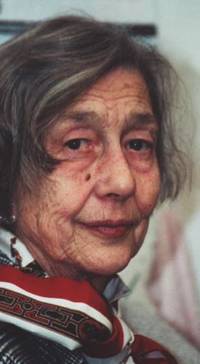


Hildegard Hess followed in her father's footsteps. Already during her doctoral thesis at the Technical University of Berlin she worked for his analytics laboratory. Eventually she took it over and ran it for three decades.
Hildegard Hess was born in 1920 in the Berlin district of Britz. Her father Ludwig Hess (1882-1956) was the director of a factory for the chemical company Riedel de Haën, her mother Hertha was a trained nurse. Since the family lived in a company apartment on the factory premises at the time, Hess came into contact with chemistry at an early age. In 1931, as a state-licensed food chemist and commercial chemist, his father took over a chemical research laboratory.
Hess attended a convent school and was therefore exempt from membership in the Association of German Girls. She passed her Abitur in 1939 - shortly before the school was closed by the National Socialists. She then began studying chemistry at the Friedrich-Wilhelms-Universität in Berlin, but soon moved to the Albert-Ludwigs-Universität Freiburg. She completed her training in 1944 at the Berlin Reich Institute for Food Chemistry and Pharmaceutical Chemistry . Her academic teachers included the later Nobel Prize winners in chemistry, Hermann Staudinger (1881-1965) and Georg Wittig (1897-1987). ?It was only under Professor Wittig that I really understood chemistry,? Hess said in retrospect. With his enthusiasm he was her most wonderful teacher.
After graduating, Hess entered her father's commercial laboratory. In addition to this, she did her doctorate under Josef Schormüller (1903-1974) at the Institute for Food Chemistry at the Technical University of Berlin on the content of vitamins in the mycelium of microorganisms. She was awarded her doctorate in 1953. A year later, she was publicly appointed and sworn in as a commercial chemist. This allowed Hess to work as a consultant and expert for manufacturers and retailers in the chemical industry. In Berlin, and probably across Germany, she was the first woman in this position.
After the death of her father in 1956, Hess took over his commercial laboratory and ran it for three decades. In 1986 the laboratory merged with the Kirchhoff Berlin Institute founded three years earlier, a service company for analytics that still exists today.
In addition to her work as a freelance chemist, Hess taught at the TU Berlin, where she held a teaching position in nutritional sciences from 1955 to 1965. She also gave courses for grocers. Hildegard Hess died on July 23, 2014 at the age of 84 in Berlin.
a notice
The texts published in this series do not claim to be scientific publications. Authors and other people involved are not experts in the history of science. The purpose of the series is to introduce the mostly unknown women chemists and to remind you of the well-known women chemists. We encourage readers who want to know more to study academic Literature on the women featured. In some cases there are detailed chemical-historical works.
authors
Prof. Dr. Eberhard Ehlers
Prof. Dr. Heribert Offermanns
Editorial processing
Dr Uta Neubauer
project management
Dr Karin J. Schmitz (GDCh public relations)
The authors are responsible for the content of the biographies.
The content presented on these pages has been carefully compiled. However, the authors, Editorial staff and publishers assume no responsibility or liability for the completeness and correctness of the content or for typographical errors.
Photo: Hildegard Hess, from female chemists - they existed and they exist, brochure of the German Chemical Society (GDCh), 2003, p. 26
back to overview biographies of women chemists
back to publications
This page has been machine translated. If you have any feedback or comments please feel free to contact us. 
last modified: 10.05.2021 16:19 H from N/A